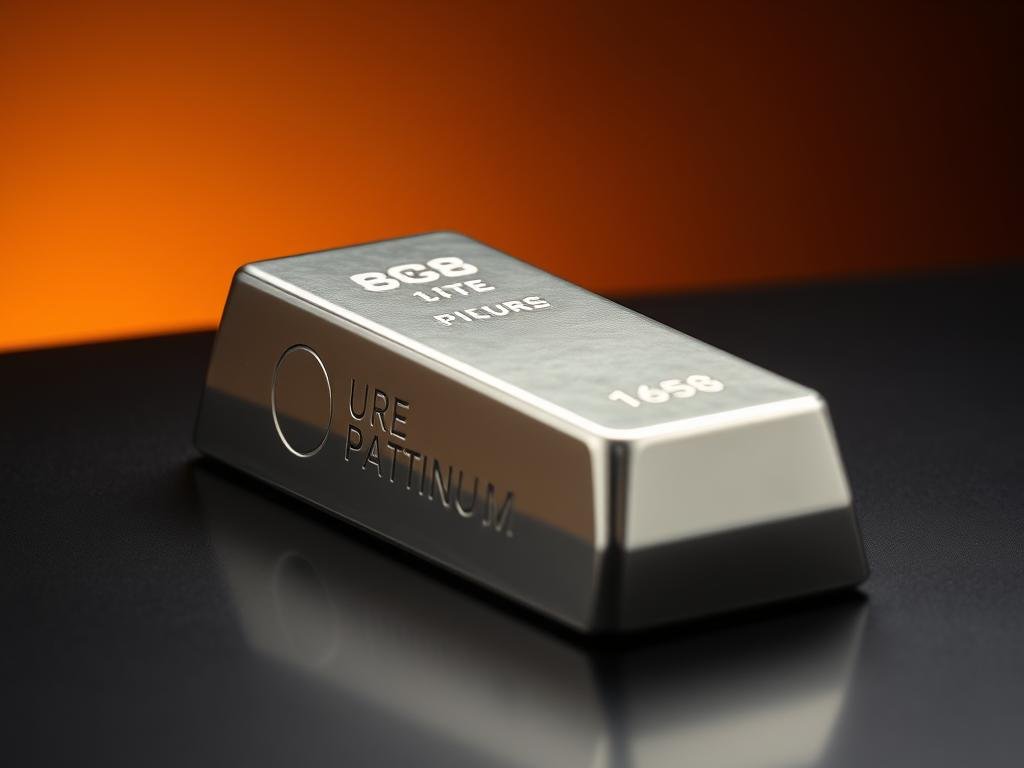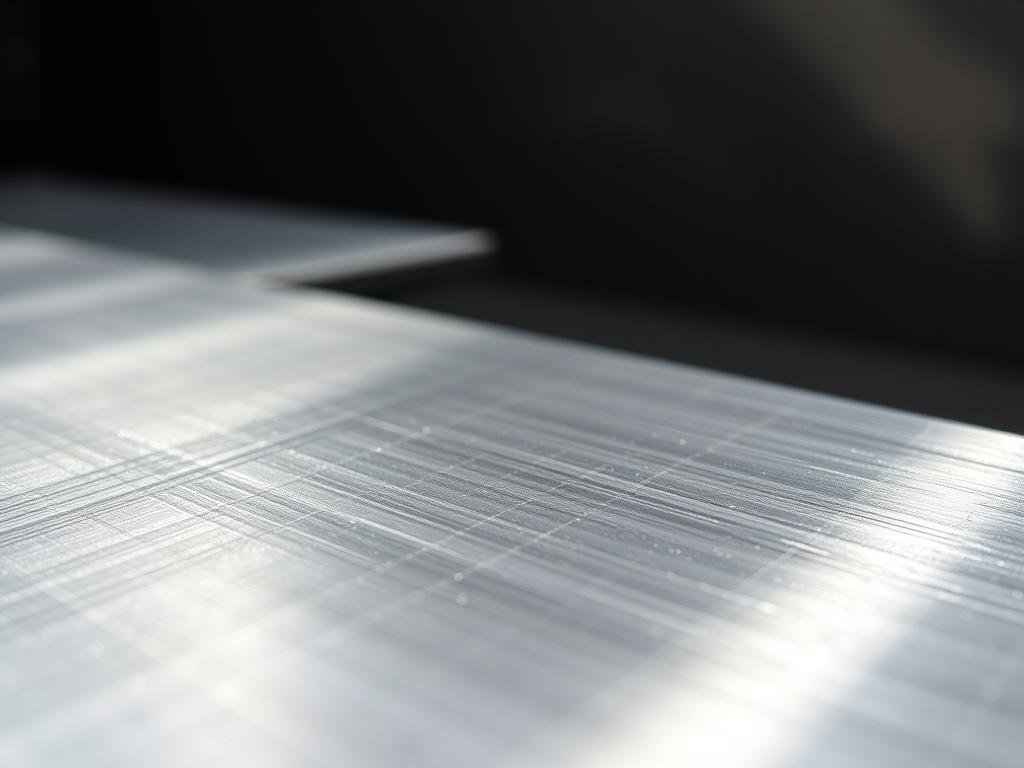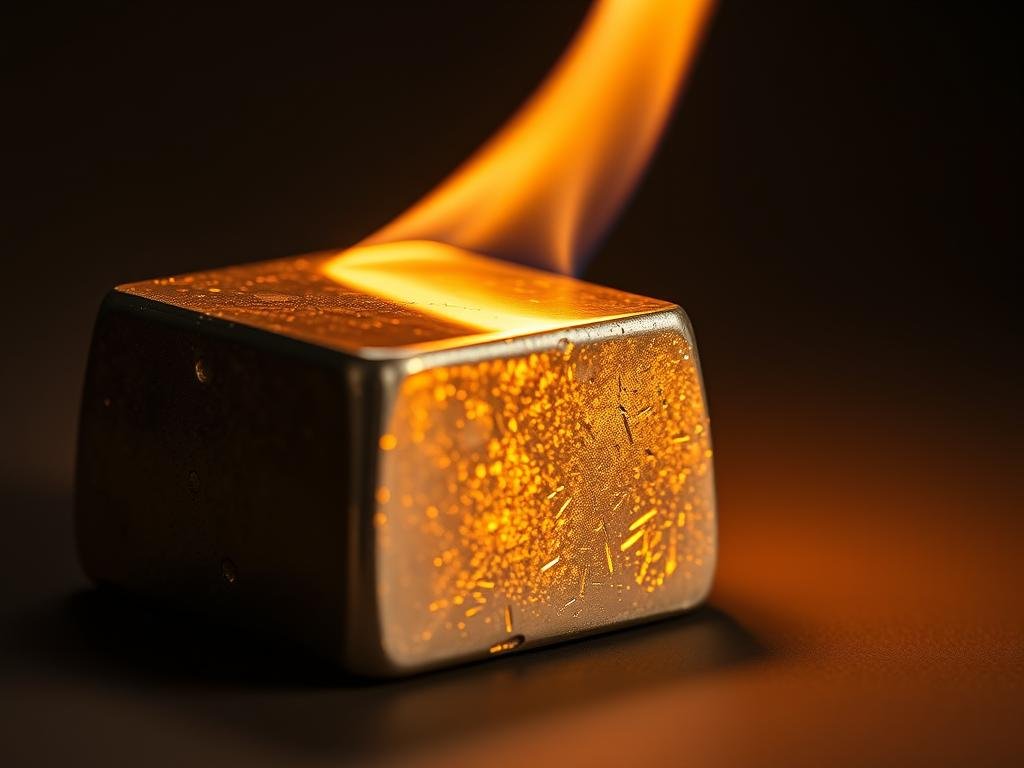More than 90% of industrial catalysts rely on this metal at temperatures above 1000°C, and its fusion threshold sits near 1768–1772°C (about 3215°F). That scale matters when you design parts, choose tooling, or set thermal cycles for CNC work.
In this quick guide we define the transition temperature where a solid becomes liquid, explain why small reported differences occur, and note that values assume standard atmospheric pressure.
Rapidaccu brings 15+ years in CNC machining and manufacturing. We supply precision plastic and metal parts from prototype to mass runs with tight tolerances and fine surface finish.
Key data covered here includes accepted fusion and boil values, basic thermal and structural properties, and comparisons with gold and silver. Practical notes will link these facts to tooling choices, heat control, and market decisions for shops and home labs alike.
Platinum melting point at a glance
A quick reference anchors design choices: accepted fusion lies near 1768.3–1772°C (about 3215°F) at standard atmospheric pressure. That value and the boiling mark near 3825–3827°C serve as datasheet anchors used across material charts and testing reports.
Use these values when comparing metals for high-temperature use. Rapidaccu delivers precision CNC machining for prototypes and volume runs, which helps keep dimensional accuracy and surface finish when parts operate near extreme temperatures.
- Reference melting point shown in both °C and °F for engineering use.
- Values assume standard atmospheric pressure; labs may report a narrow range due to purity and measurement method.
- High melting point separates this metal from common metals like gold and silver and informs tooling and coolant choices.
| Metal | Melting Point (°C) | Melting Point (°F) | Notes |
|---|---|---|---|
| Platinum | 1768.3–1772 | ~3215 | High thermal stability; used as baseline for high-temp designs |
| Gold | 1063 | 1945 | Much lower than platinum; different alloy choices needed |
| Silver | 961.8 | 1763 | Lower fusion temp; watch for creep and oxidation at high load |
whats is the platinum melting point and boiling point under standard pressure
For applications near 3000°F, knowing exact phase-change numbers drives safe tooling and process limits.
Melting: 1768–1772°C (about 3215°F) at standard atmospheric pressure. This range is the accepted value engineers enter into simulation and material cards to verify thermal budgets and fixture selection.

Boiling and standard pressure
Boiling sits near 3825–3827°C at standard atmospheric pressure. “Standard pressure” refers to 101.325 kPa, the reference used in handbooks and software for consistent temperature data.
Melting vs. freezing
At the listed temperature, solid and liquid phases coexist in equilibrium. Added energy goes into the phase change as latent heat rather than raising temperature.
Boiling vs. condensation
Boiling defines the saturation temperature for a given pressure; condensation is the reverse at that same temperature. Both points shift with pressure, so vacuum or pressurized environments alter phase behavior.
- Use the 1768–1772°C range for simulation inputs and material verification.
- Account for latent energy in casting, crucible selection, and thermal cycles.
- Adjust shop processes when pressure differs from standard to preserve geometry and finish.
| Property | Standard Value (°C) | Engineering note |
|---|---|---|
| Melting range | 1768–1772 | Enter into thermal models and part tolerancing |
| Boiling range | ~3825–3827 | Relevant for vapor-phase operations and high-vacuum tests |
| Reference pressure | 101.325 kPa | Handbooks and simulation default; changes shift temperatures |
Rapidaccu supports engineering teams by aligning machining strategies with these thermal values, helping preserve dimensional stability and surface finish when parts see elevated temperature in service. For a validated element datasheet, see element datasheet.
How platinum compares to other metals by melting point
For parts that see extreme heat, choosing a metal with a much higher fusion threshold reduces failure risk. This guide contrasts common choices to help engineers pick a candidate for prototypes and production.
Platinum versus gold and silver
Platinum’s fusion range near 1768–1772°C sits roughly 700–800°C above gold and more than 800°C above silver. That gap gives a wide safety margin for high-temperature tooling, electrodes, and glass work.
Sterling silver, even with alloying, remains far below this range. For anything needing sustained heat stability, gold or silver cannot match performance without major design compromises.
Neighboring platinum-group metals
Palladium and rhodium share noble behavior but differ in high-temperature stability and oxidation. Iridium and osmium show even higher thresholds, yet they bring machining difficulty and cost.
- Higher melting points in the group improve thermal endurance but raise fabrication challenges.
- Some alloys give slightly lower limits that still meet duty cycles where full-range resistance isn’t required.
| Material | Approx. fusion (°C) | Key trade-off | Use case |
|---|---|---|---|
| Platinum | 1768–1772 | Excellent corrosion resistance; higher price | High-temp electrodes, crucibles |
| Gold | ~1063 | Good conductivity; lower thermal limit | Electrical contacts, decorative parts |
| Silver | ~961.8 | Best conductivity; low heat tolerance | Conductive components, jewelry |
| Palladium / Rhodium | ~1555 / ~1964 | Varied oxidation behavior; mid to high temp | Catalysis, specialty alloys |
Rapidaccu helps compare candidate metals and alloys from prototype to mass runs, balancing melting points, machinability, and price. For deeper numerical comparisons see an element comparison to inform early material choices.
Why platinum has a high melting point
Atomic vibrations and crystal order explain why this noble metal needs so much heat to liquefy.
Atomic bonding and the Lindemann vibration concept
The Lindemann idea links melting to rising vibration of atoms. As thermal energy grows, vibration amplitude increases until the lattice can no longer hold.
That loss of order triggers melting. For dense transition metals this requires large energy input, so melting starts at a higher temperature.
Transition metal structure: dense, fcc lattice and strong metallic bonding
A face-centered cubic lattice packs atoms tightly. Strong metallic bonds and close packing resist displacement, raising the melting point and improving corrosion resistance.
Effect of pressure on melting temperature
External pressure shifts where melting happens. Published values use standard atmospheric pressure for consistency, but higher pressure often raises the threshold.
- Dense atomic packing and bonding strength reduce lattice destabilization.
- Bulk scale and thin sections show different heat flow and gradients during thermal cycles.
- Gas exposure and pressure changes affect phase behavior at extreme heat.
| Factor | Atomic role | Shop impact |
|---|---|---|
| Lindemann vibrations | Predict onset of disorder | Guide heat cycles |
| fcc lattice | Tight packing of atoms | Reduces distortion risk |
| Pressure | Shifts melting temperature | Adjust fixtures and cooling |
Rapidaccu uses these insights to tune feeds, coolants, and thermal plans so parts keep dimensional accuracy and surface integrity under high heat.
From heat to use: applications that leverage platinum’s high-temperature stability
High-temperature processes often rely on noble metals that keep shape and function under repeated thermal cycles. This section reviews common applications and what they demand from material and machining.
Industrial roles
Platinum finds use in catalytic converters, electrodes, and laboratory crucibles for aggressive melts. It also serves in glass handling because molten glass does not wet this metal.
- Crucibles for corrosive melts and fixtures in hot glass forming.
- Electrodes and resistance thermometers used in harsh electrochemical settings.
- Catalyst supports in automotive and hydrogen processes that see frequent cycles.
Performance properties
Noble corrosion resistance and oxidation stability extend service life. Parts keep usable strength at elevated temperatures compared to many other metals.
This durability reduces downtime and keeps process yields steady in furnaces, reactors, and lab equipment.
Machining and fabrication implications
Tool selection, coolant strategy, and chip control must limit local heat to protect surface integrity and dimensions. Designers may choose alloys or palladium blends to balance cost and strength while keeping thermal advantages.
| Application | Key benefit | Machining note |
|---|---|---|
| Crucibles | Corrosion resistance at extreme heat | Use hard tooling and slow feeds |
| Electrodes | Stable performance in harsh gas and ionic environments | Control surface finish to avoid hotspots |
| Catalysts | Repeatable thermal cycles, long life | Precision tolerances improve contact and flow |
Rapidaccu’s 15+ years of CNC experience delivers tight tolerances and fine finish on high-value metal components for high-temperature service. That expertise helps parts meet process demands with fewer interruptions.
Rapidaccu insight: what a high melting point means for precision CNC and material selection
A metal’s thermal endurance drives choices in fixturing, tool path, and inspection strategy for precision parts.

Selecting metals and alloys for prototypes through mass production
Match alloy melting points to expected service temperature so you keep a safe thermal margin. Consider strength retention and corrosion resistance when down-selecting metals for long life.
Price and market availability matter. Platinum alternatives like gold or silver may cost less but provide relatively low temperature safety. Rapidaccu’s 15+ years of CNC experience helps balance performance, cost, and supply risk from prototype to production.
Managing heat input, surface finish, and dimensional accuracy in CNC machining
Limit localized heating with optimized feeds, speeds, and balanced tool engagement. Use effective coolants and controlled toolpaths to protect surface finish on thin sheets and complex parts.
Fixturing and path planning cut distortion and preserve tolerances. For welded assemblies, respect alloy chemistry and welding procedures to avoid heat-affected deterioration.
- Compare melting points across candidate metals for risk and inspection planning.
- Prioritize process control, metrology, and finishing to hit tight specs on high-value metals.
- Engage DFM early to reduce rework, lower price impact, and shorten lead time.
| Consideration | What to check | Shop action |
|---|---|---|
| Thermal margin | Service temperature vs melting points | Choose alloys with adequate temperature headroom |
| Machinability | Sheet thickness, strength, and resistance | Adjust feeds, tooling, and coolant |
| Joining | Welding compatibility and HAZ | Specify welding procedure and post-weld inspection |
Conclusion
Choosing a metal for sustained heat links lab numbers to shop practice. Platinum’s melting point sits near 1768–1772°C and boiling near 3825–3827°C, data rooted in dense fcc packing and strong metallic bonding that give reliable resistance at high temperature.
That high melting point far exceeds gold and silver, so designers get wider thermal margin for crucibles, fixtures, and parts exposed to hot gas or repeated cycles. Sterling silver and similar alloys show relatively low limits and need careful handling.
For material selection, machining, and finish that meet service demands, consult validated platinum data. Rapidaccu stands ready to support projects from alloy choice through CNC finishing to deliver durable, production‑ready parts.

